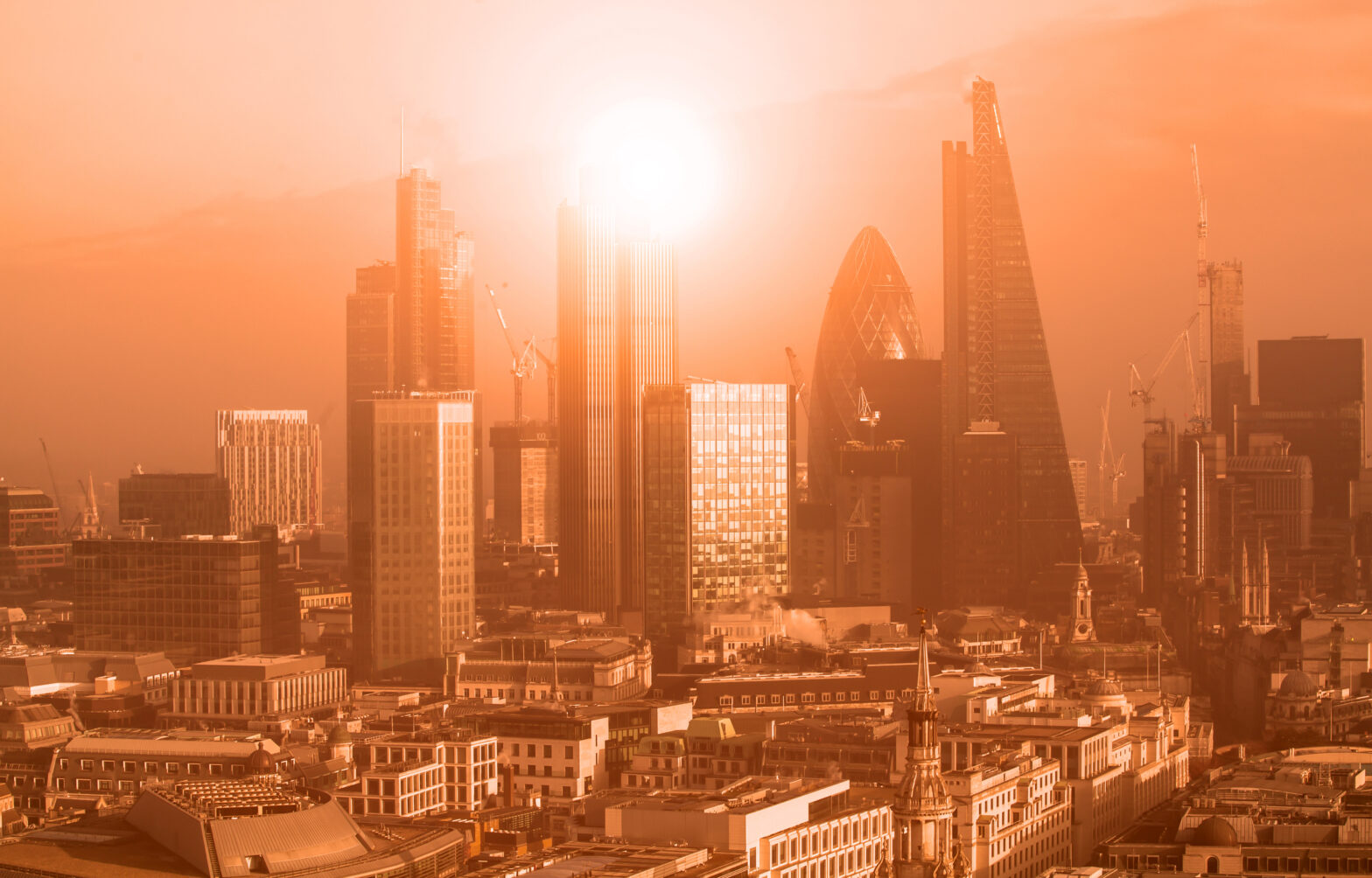Hot Weather in Britain: What’s Behind the Rising Temperatures?

Across the UK, people are experiencing hotter, longer summers. The pattern is clear. Heatwaves are arriving more often, summer days are becoming more intense, and many are asking whether this shift is temporary or part of something larger. This article explains what is driving these rising temperatures, what the consequences are, and how people and communities can respond.
Is Britain Getting Hotter?
Britain is getting hotter. The evidence for this trend is clear and well-documented. According to the Met Office, the ten hottest years ever recorded in the UK have all occurred since 2002. The number of days where the temperature exceeds 30°C has increased. In July 2022, a temperature of 40.3°C was recorded in Lincolnshire. This was the first time the UK had recorded a temperature above 40°C.
Hot nights are also becoming more common. These are nights where the temperature stays above 20°C. These events are known to increase health risks, especially for people who are older or living with long-term illnesses.
In terms of long-term averages, the UK was nearly 1°C warmer from 1991 to 2020 compared to the period between 1961 and 1990. These figures show that this is not a short-term change. It is part of an ongoing shift in Britain’s climate.
Why Is the UK Experiencing More Hot Weather?
Hot weather is becoming more frequent in the UK because of climate change and changes in atmospheric conditions.
The Role of Climate Change
Climate change is the most important reason Britain is getting hotter. Human activities have increased the levels of greenhouse gases in the atmosphere. These gases trap heat and raise global temperatures.
As a result, average temperatures are now higher. This makes extreme heat events more likely. When hot conditions do occur, they are more intense than they would have been in the past.
This is not a distant concern. Climate change is already affecting local weather patterns in the UK. It is making summers hotter and heatwaves more dangerous.
Atmospheric Changes and Jet Stream Shifts
Changes in the atmosphere are also making the UK hotter. One important factor is the behaviour of the jet stream. The jet stream is a fast-moving current of air high in the atmosphere. It helps to steer weather systems across the Atlantic and over Britain.
Recently, the jet stream has become more irregular. When it slows down or changes course, high-pressure systems can stay in place over the UK. These systems bring clear skies, dry air, and sunshine. Without moving weather systems to break the pattern, the hot conditions last longer.
This combination of a warmer climate and slower-moving weather systems is why the UK is experiencing longer and more intense periods of heat.
How Hot Weather Affects the UK
Rising temperatures have serious effects across many areas of life in Britain. These include public health, infrastructure, natural ecosystems, and food production.
Health and Wellbeing
High temperatures increase the risk of illness and death. Heat can lead to dehydration, heat exhaustion, and other conditions. It can also make long-term health problems worse.
Older adults, people with disabilities, and children are more at risk. In 2022, more than 2,800 additional deaths were recorded in England and Wales during heatwave periods.
The NHS comes under pressure during extreme heat. Ambulance services receive more calls. Hospitals treat more people for heat-related conditions. These effects show how rising temperatures can stretch already limited healthcare resources.
Infrastructure and Transport
British infrastructure is not designed for extended periods of high heat. Roads can soften and become uneven. Railways may buckle, which causes delays and cancellations. Water pipes and electricity cables may also be affected by heat.
When this happens, transport systems become unreliable. Energy use increases, which places more strain on the electricity grid. At the same time, hot weather increases demand for water and reduces rainfall, which lowers water supplies.
These combined pressures lead to higher costs for maintenance and emergency response.
Nature and Food Systems
Hot weather has damaging effects on the environment and on the systems that produce food. Crops need water and stable conditions to grow. When it is too hot or too dry, yields fall. In 2018, a particularly hot summer led to lower production of wheat and other staple crops in the UK.
Nature is also affected. Rivers and lakes lose water more quickly. Some species of fish and amphibians cannot survive in warmer or shallower waters. Plants may wilt or die. Pollinators such as bees and butterflies may struggle to find food or suitable habitats.
These effects are not temporary. If hot weather continues to increase, ecosystems may not recover.
Preparing for More Heatwaves
Preparing for hot weather is essential. The UK must adapt to a warmer climate while also reducing the risks that come with it.
You can learn about specific actions by visiting Prepare for Heatwaves, one of Carbon Copy’s 25 Big Local Actions.
Individual Actions
Everyone can take simple steps to prepare for extreme heat. These include:
- Drinking water regularly throughout the day
- Keeping blinds or curtains closed during the hottest part of the day
- Avoiding exercise or outdoor work during peak heat hours
- Checking in on neighbours who may need help
These actions reduce personal risk and help communities look after each other.
People can also make their homes more resistant to heat. This includes adding insulation, planting shade outside, or improving ventilation. These changes help keep buildings cooler in the summer.
Community and Local Responses
Local councils and organisations have an important role to play. They can design public spaces that stay cooler, such as shaded streets, tree-lined paths, and water features.
Green spaces help to reduce urban temperatures and support wildlife. Installing reflective materials on buildings or roads also helps lower the surrounding temperature.
To see how local authorities are taking action, visit our UK emissions section.
Can We Slow the Warming Trend?
Preparing for hot weather is only one part of the solution. It is also necessary to address the cause. That means reducing the emissions that are driving climate change.
Reducing Emissions
Reducing emissions helps to limit future warming. This includes using public transport, improving the energy efficiency of buildings, and switching to low-carbon heating. It also includes restoring natural spaces that store carbon, such as forests and peatlands.
These efforts are more effective when people take action together. Community-led energy projects, transport plans, and local food systems all contribute to meaningful change.
What’s Behind the Rising Temperatures FAQ
Why is it getting hotter in the UK?
It is getting hotter in the UK because of climate change and changes in atmospheric conditions. Greenhouse gases are raising global temperatures. At the same time, changes in the jet stream mean that heat stays over Britain for longer periods.
Is the hot weather part of climate change?
Yes. The hot weather Britain is experiencing is part of climate change. It is one of the most visible effects of global warming. As the planet gets warmer, extreme heat events become more frequent and more intense.
How does hot weather affect British life?
Hot weather affects British life by harming health, disrupting transport, and damaging ecosystems. It increases pressure on hospitals and causes damage to infrastructure. It also threatens the systems that provide food and water.
What can we do to adopt or reduce further warming?
To adapt, people can prepare their homes and check on neighbours during heatwaves. Communities can add shade, plant trees, and design cooler public spaces. To reduce warming, people can lower emissions and support changes in energy, transport, and land use. The Prepare for Heatwaves and local climate action pages provide more information.
Sources:
- https://www.metoffice.gov.uk/about-us/news-and-media/media-centre/weather-and-climate-news/2019/state-of-the-uk-climate-2018
- https://www.nhs.uk/live-well/seasonal-health/heatwave-how-to-cope-in-hot-weather/
- https://www.metoffice.gov.uk/blog/2025/what-is-the-jet-stream-and-how-does-it-affect-our-weather
- https://www.metoffice.gov.uk/about-us/news-and-media/media-centre/weather-and-climate-news/2025/met-office-report-details-rising-likelihood-of-uk-hot-days
About Carbon Copy
Carbon Copy exists to turn individual concern for climate and nature into collective impact by helping people connect locally and create real change together. We believe the fastest way to create change is to share it. We tap into a powerful truth: copying is human nature. When action is visible and easy to replicate, it spreads. It’s about people stepping in, inspired by what others have done and copying what works. Carbon Copy offers a place to start, with a national collection of climate action stories, place-by-place climate and nature plans, a popular podcast and blog, and capacity building for organisations across public, private and third sectors.
Recommended from Carbon Copy
-

Copy these! 5 big local ideas about being more inclusive
Those who feel the impacts of climate change most keenly are often left out of environmental policy conversations. How can…
-

Copy These! 5 Big Local Ideas About Using Decentralised Energy
Communities around the UK are generating their own electricity - through solar, hydro and wind. But how can they ensure…
-

How to Choose a Sustainable Christmas Tree: Real vs Fake
As you’re gearing up for the festive season, the question of which Christmas tree to bring home might come up.…
-
 Food and Agriculture, Good Food, Greater Fairness, Health & Wellbeing, Less Waste, Thriving Wildlife
Food and Agriculture, Good Food, Greater Fairness, Health & Wellbeing, Less Waste, Thriving WildlifeCopy These! 5 Big Local Ideas About Creating A Food Partnership
We all need to eat, and a food partnership is a great way to create a stronger, more sustainable, more…